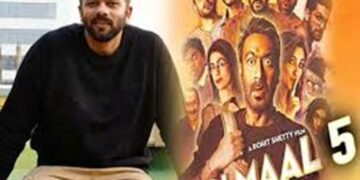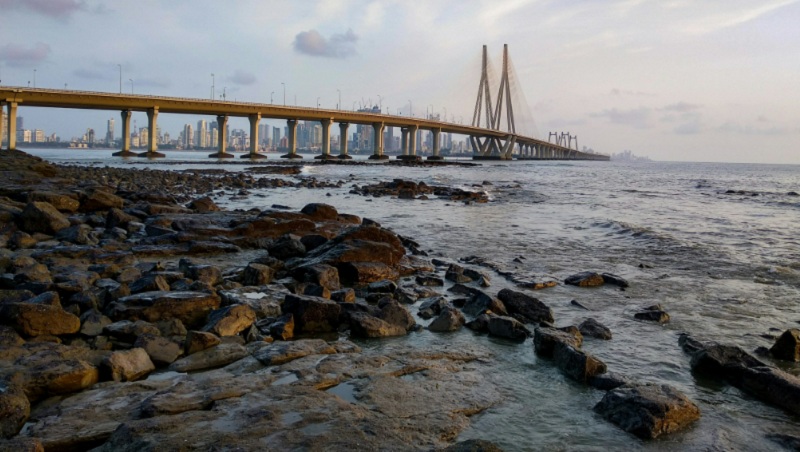By Carlos Frederico Pereira da Silva Gama
US President Donald Trump’s April 2 “Liberation Day” salvo of tariffs has roiled the world and, despite subsequent announcements of pauses and exemptions, threatens to throw the global economy into turmoil and uncertainty.
Projections for the world economy made last November had already anticipated trade uncertainty following Trump’s victory in the elections whose results came on November 5, but the launch of a global trade war by Trump has forced reassessments.
In its forecast for 2025 released last year on November 15, Goldman Sachs projected global GDP growth at 2.7 percent in 2025—unchanged from 2024—with a slight slowdown to 2.6 percent expected in 2026. On April 3, after Trump announced his tariffs, Ashish Shah, chief investment officer of public investing at Goldman Sachs Asset Management, told journalists in New York, “We view this as kind of a growth shock”.
Fitch Ratings was less optimistic in its projections released in December 2024, predicting just 2.1 percent growth for 2025 and 1.7 percent for 2026. On March 18, with Trumpian tariffs looming, Fitch cut its growth forecast to 1.7 percent for 2025 and 1.5 percent for 2026.The World Bank’s January projections matched Goldman Sachs’s, describing a “modest global expansion.” Even the International Monetary Fund, typically more bullish, forecast only 3.3 percent growth for 2025 and 2026—both below historical averages.
These restrained outlooks came as major economies faced renewed geopolitical tensions, particularly in trade.
But deeper shifts are also underway.
For the first time in years, many G20 economies—once the engine of global recovery after the 2008 financial crisis—are now slowing in tandem. Only a handful, including India, Indonesia, and China, are expected to outpace the global average GDP growth rate, estimated at 3.2 percent in 2024.
This slowdown has been compounded by the lingering aftershocks of the COVID-19 pandemic. A comparison of GDP data of all G20 members between 2018-24 by this author revealed that only a quarter of members have surpassed their 2019 growth levels. Japan, Italy, and Mexico have posted meagre gains, while Argentina remains in decline. Only Turkey demonstrated a significant post-pandemic leap forward.
Against this backdrop, India has emerged as a notable outlier. Now the world’s fifth-largest economy, it recorded real GDP growth of 6.5 percent in the financial year 2024-25, and over 9 percent in 2023-24. At a time when global growth is sputtering, India is expanding at a pace unmatched by any other major economy.
India’s trajectory reflects more than economic momentum. Following the 2008 crisis, economist Dani Rodrik identified India as a possible model for a new development pathway—one that diverged from the Washington Consensus, a set of ten economic policy prescriptions that include privatisation and the liberalisation of foreign direct investment. Unlike many emerging markets, India resisted wholesale liberalisation. The state has remained a key actor, working alongside private enterprise in a hybrid economic model. Currency controls persist.
A young, increasingly skilled workforce underpins the country’s transition to a services-and-industry hybrid economy.
India’s rise is also shaped by its political system. As the world’s largest democracy, it differs from other rising powers such as China in both institutional structure and normative commitments. Its ascent is not predicated on authoritarian consolidation or state capitalism. Rather, it is rooted in a complex, pluralist system that tries to balance decentralisation with national ambition.
In multilateral forums, India has sought greater representation for the Global South while maintaining strategic autonomy from both China and the West.
Still, India’s growth story is not without its liabilities. The 2025 budget was presented amid growing concern over rising unemployment and stagnant real wages. Stark economic and social inequalities remain unresolved.
Although Indian firms and megacities are gaining visibility on the global stage, the country has yet to fully translate its economic clout into the kind of soft power that might underpin broader global influence. Its distinctive posture in multilateral institutions—assertive yet independent—signals ambition, but not yet leadership.
Meanwhile, the United States is entering a new phase of economic nationalism. During both the Trump (2017–2020) and Biden (2021–2024) administrations, U.S. GDP grew at an average rate of 2.5 percent (excluding the pandemic’s peak and rebound)—stronger than many of its developed peers, but still below global averages. This suggests that while the United States remains resilient, its share of global influence is slowly eroding. As the growth of other parts of the world accelerates, the United States appears relatively smaller, its leadership more contested.
Trump’s protectionist efforts to Make America Great Again could end up hastening this decline.
Efforts by the Biden administration to revive a liberal international order were mixed. While rhetorically committed to multilateralism, the United States struggled to mobilise allies and shape outcomes in crises such as Gaza and Ukraine. Trump’s return to tariff policies aimed at G20 trading partners—Canada, Mexico, China, and the European Union—signals renewed strain on institutional cooperation.
Trade, once the cornerstone of globalisation, has stagnated. The trade-to-GDP ratio has fallen below its 2008 peak, even though trade volumes have now surpassed 2019 levels. With the World Trade Organization largely paralysed, global growth increasingly depends on national strategies that prioritise resilience over openness.
Here, India again stands apart. In the post-pandemic period, it has increased its share of global trade and outperformed many peers in adapting to a more fragmented international landscape. In doing so, it offers a dual challenge to the transactional ethos now taking hold in parts of the West. India has delivered long-term growth without abandoning the rules and norms that govern the multilateral system. Its rise has been shaped by those rules—not in opposition to them.As the United States retreats and Europe contends with internal divisions and the ongoing Ukraine-Russia war on its eastern flank, the future of the rules-based order, tattered by the world’s response to the Gaza crisis, hangs in the balance.
India’s ability to engage constructively with the broader Global South—while maintaining democratic institutions and macroeconomic stability—may prove decisive. In a world where leadership is increasingly diffuse, India is positioning itself not merely as a regional power, but as a global actor with a distinct model to offer.
Carlos Frederico Pereira da Silva Gama is an Assistant Professor at the department of International Relations and Governance Studies at Shiv Nadar Institution of Eminence, Delhi-NCR, India. He is also founder of the BRICS policy center, Brazil, and author of four books.
Originally published under Creative Commons by 360info™.















